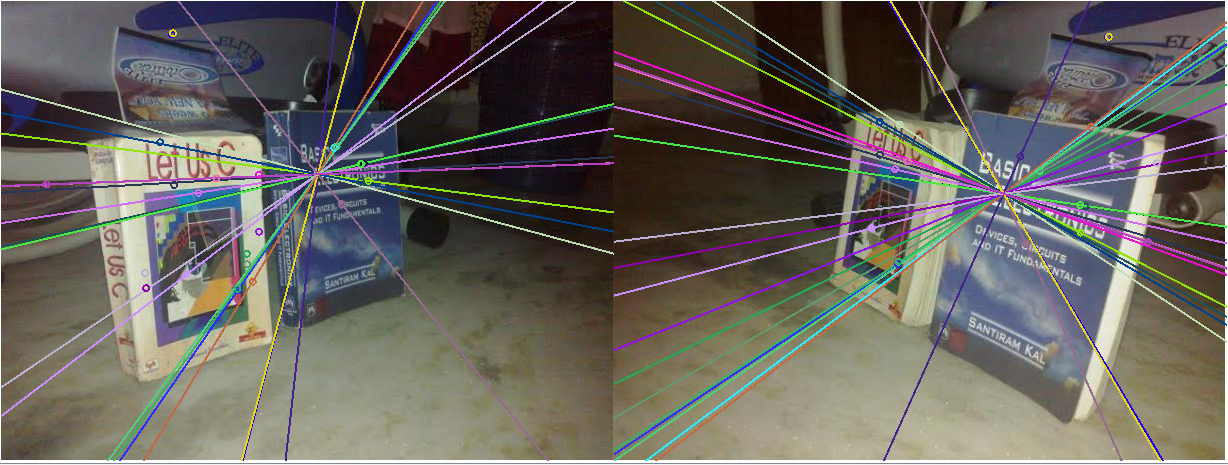Hello everyone,
I was following OpenCV tutorial for Epipolar geometry in python and wanted to see in my little test code converting to c++ (Qt environment). Testing with the standart dataset of OpenCV concludes the following scene. The epilines seem to converge wrong. The F (fundamental) matrix was calculated with least median algorithm. I changed to 8-point algorithm with not much change.
Can anyone shed a light what might be going wrong please?
Thanks in advance,
int minHessian = 400;
Ptr<SurfFeatureDetector> surf_ = SURF::create( minHessian );
FlannBasedMatcher matcher;
std::tie(img1, imgp1) = m_images[ui->cmbImage1->currentText()];
std::tie(img2, imgp2) = m_images[ui->cmbImage2->currentText()];
cvut::convertToGray(img1, img_gray_1);
cvut::convertToGray(img2, img_gray_2);
surf_->detect(img_gray_1, keypoints_1);
surf_->detect(img_gray_2, keypoints_2);
surf_->compute(img_gray_1, keypoints_1, descriptors_1);
surf_->compute(img_gray_2, keypoints_2, descriptors_2);
matcher.match( descriptors_1, descriptors_2, matches );
vector< DMatch > good_matches;
cvut::getGoodMatchesWithMinDist(matches, good_matches);
DMatch match;
for( size_t m = 0; m < good_matches.size(); m++ )
{
match = good_matches[m];
pts1.push_back( keypoints_1[match.queryIdx].pt );
pts2.push_back( keypoints_2[match.trainIdx].pt );
}
F = findFundamentalMat(pts1, pts2, FM_LMEDS);
computeCorrespondEpilines(pts1, 1, F, lines2);
computeCorrespondEpilines(pts2, 2, F, lines1);
and the drawing code :
QPointF pt0, pt1;
Vec3f r;
qreal c0 = m_bbImg1.width();
qreal c = m_bbImg1.width();
for(int i = 0; i < lines1.size(); i++)
{
r = lines1[i];
pt0 = QPointF(0, -r[2]/r[1]);
pt1 = QPointF(c, -(r[2]+r[0]*c)/r[1]);
m_epilines1.push_back(QLineF(pt0,pt1));
}
c = m_bbImg2.width();
for(int i = 0; i < lines2.size(); i++)
{
r = lines2[i];
pt0 = QPointF(c0, -r[2]/r[1]);
pt1 = QPointF(c0+c, -(r[2]+r[0]*c)/r[1]);
m_epilines2.push_back(QLineF(pt0,pt1));
}


